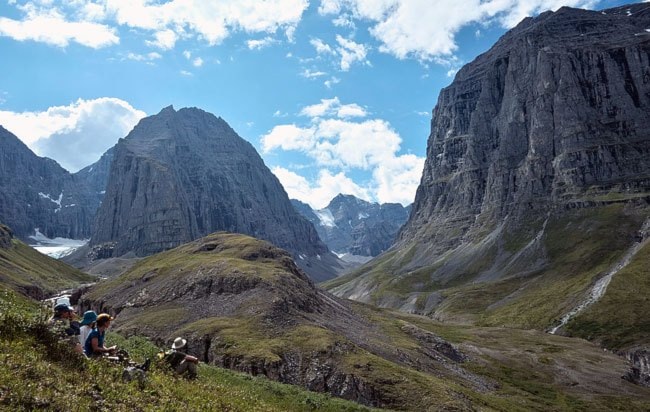The Yukon Chamber of Mines plans to spend this year improving the relationship between First Nations, industry and government, says Samson Hartland, the organization’s executive director.
Things are not looking great for 2015, when you look at the weak global financial markets and mineral prices together with ongoing legal battles with First Nations here in the Yukon, he said.
“It’s the worst combination, that we’re dealing with right now. And it continues to get worse,” said Hartland.
“The attractiveness of the jurisdiction to invest in is continuing to fall by the minute as conflict continues to occur through the courtroom, whatever the issue is, be it the Peel or be it Class 1 activities or be it staking - take your pick. As we continue to battle these out, people are pushing the pause button on the jurisdiction and going elsewhere.”
There’s not much Yukon miners can do about global markets, but they could have a role in repairing relationships here at home.
“When we’ve been dealing with parties as an organization, speaking with parties, I think there’s a genuine interest, no matter who you speak with, be it Yukon First Nations or the Yukon government, to want to resolve it,” said Hartland.
This year the chamber plans to organize facilitated discussions between industry, First Nations and the Yukon government, he said.
They will also be working with First Nation partners to update a guiding document for miners on how to build successful partnerships with First Nations.
“Those are the sort of signals that you want to send out to the rest of the world and industry, to say, ‘You know what, we are working together in harmony, we are respectful of traditional territory,’” said Hartland.
“If there’s a willingness to respectfully engage in dialogue and respect each other’s perspectives, those perspectives don’t always have to mesh, and don’t always have to be the same. They can be different and you can still work together towards a common goal. And everybody’s common goal, I think, in all of this, is the betterment of Yukon’s quality of life for all its citizens.”
Of course the highest-profile conflict right now is the battle over the fate of the land use plan for the Peel watershed.
The Yukon government announced late last month that it will appeal the Yukon Supreme Court decision that struck down its plan for the Peel, which opened up most of the area for mineral staking.
Hartland said the chamber would prefer to see the parties return to respectful negotiation outside of the courts.
“We respect the Yukon government’s need to seek certainty through the courts, but in the same breath, we’re also saying that we’re disappointed and discouraged with the fact that there’s all these issues that continue to make the rounds through the courts, and we don’t believe courtroom showdowns is the way to resolve issues.”
Hartland said the Peel planning process was not necessarily fair towards the industry.
“From the perspective of a miner, a miner would say, ‘You know what, I don’t think the commission was balanced. I don’t think that it was representative of a cross-section of all Yukoners. I feel that the commission had an agenda.’ We heard those things,” he said.
“This industry, in this day and age, to be honest with you, is really David in this David and Goliath - development versus protectionism. Because right now, Yukon is at the highest end of the spectrum when it comes to land that’s been withdrawn from staking - withdrawn from any mineral activity but not any other activity, right? So let’s be clear, it’s withdrawn from mining, but not outfitting or tourism, or any other land use activity.”
When people think about protection in the Peel, they should also be thinking about Yukon as a whole, he said.
“Let’s talk about how there’s six more land use plans to come, and what level of protection people would like to see in Yukon,” said Hartland.
“Is it all the Yukon? Should Yukon be a national park? Should it be 50 per cent? Should it be 30 per cent? Let’s have a holistic discussion about land use planning and what that means to everybody.”
It’s worth noting that the judge’s Peel decision would not bind any future land use plans to a commission’s recommendations.
The decision found that the government retains the right to make final decisions on public lands, so long as it participates fully in the process and is up-front about what it wants to see in the plan.
In the case of the Peel plan, the Yukon government got in trouble for not being specific about what it wanted to see in the plan while the planning commission was active, and coming up with its own plan after the commission had finished its work.
When asked about that distinction, Hartland says it’s not the chamber’s job to get into the specifics.
“It wouldn’t really be our place to say how to go about that or to dissect a court decision, because there’s always going to be different opinions,” he said.
“What we’re saying is going through the courtrooms isn’t helping the industry right now.”
Contact Jacqueline Ronson at
jronson@yukon-news.com
